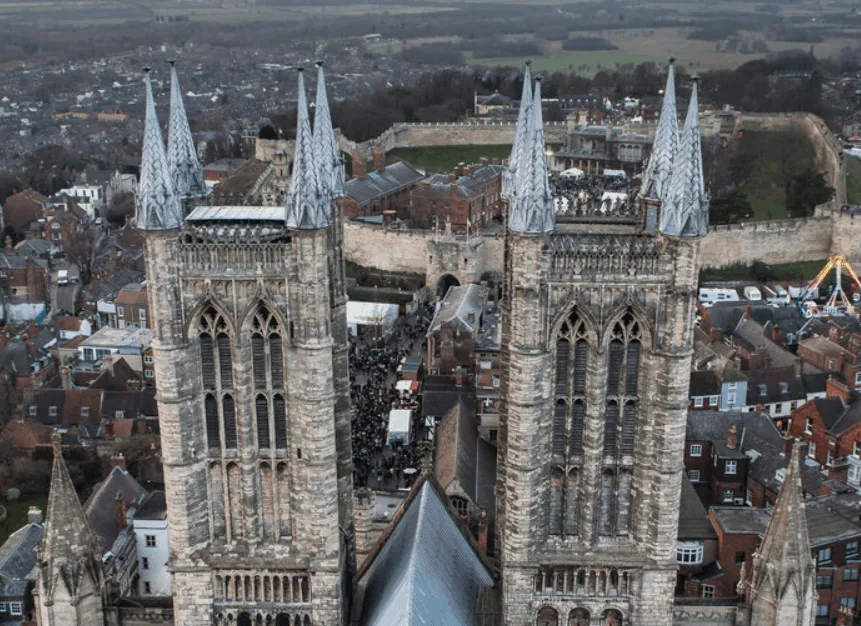It’s one of the most amazing pieces of medieval architecture in the UK.
In this post, you’ll discover the ultimate list of facts about Lincoln Cathedral, one of the most famous churches in the world.
1. It dates back to the 11th century
Shortly after the Norman Conquest of England in 1066, Remigius de Fécamp, a Norman Benedictine monk and supporter of William the Conqueror became the first Bishop of Lincoln.
He is the one who laid the foundation of the original cathedral in Lincoln in the year 1072. To construct the building, Remigius employed Norman masons who worked on the structure for 20 years.

2. Remigius moved the Bishop’s seat to Lincoln
Remigius’ idea was to move the seat of the Anglican Bishop of Lincolnshire from the St. Mary’s Church in Stow, which was considered to be the “mother church of Lincolnshire, to Lincoln.
During the construction of the Lincoln Cathedral, Remigius appropriated the much smaller parish church of St. Mary Magdalene in Lincoln.
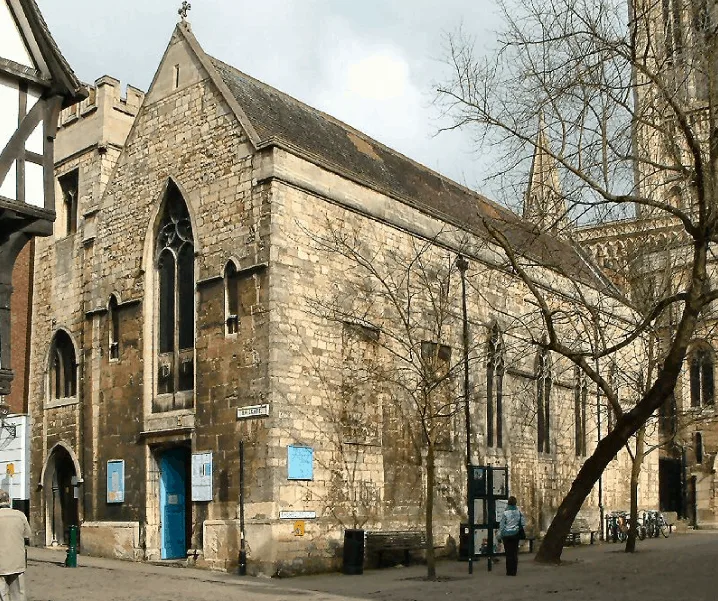
3. The Bishop didn’t live to see it consecrated
After two decades of construction, the original version of Lincoln Cathedral was finally completed. This happened in the year 1092.
One of the most remarkable facts about Lincoln Cathedral is that the first Bishop of Lincoln who commissioned the construction of the building didn’t live to see his church being consecrated.
Remigius de Fécamp, the first Bishop of Lincoln, died on May 7, 1092, 4 days before Lincoln Cathedral was consecrated on May 11 of the same year.

The founder of the cathedral is also buried inside it.

4. It was destroyed twice within 100 years
Not much remains of the original cathedral that Remigius built. In the year 1124, which was 32 years after it was consecrated, the timber roofing caught fire and large parts of the cathedral were destroyed.
The cathedral was completely rebuilt by the new Bishop at that time, Alexander of Lincoln (bishop between 1123-1148), who didn’t just renovate the demolished building but also expanded it.
The renovated Cathedral was completely destroyed yet again just 40 years later on April 15, 1185, during the most severe earthquake ever felt in the UK, which had an estimated magnitude of 5.
Only the lower part of the west end and the two attached towers remain from the cathedral built by Alexander of Lincoln.
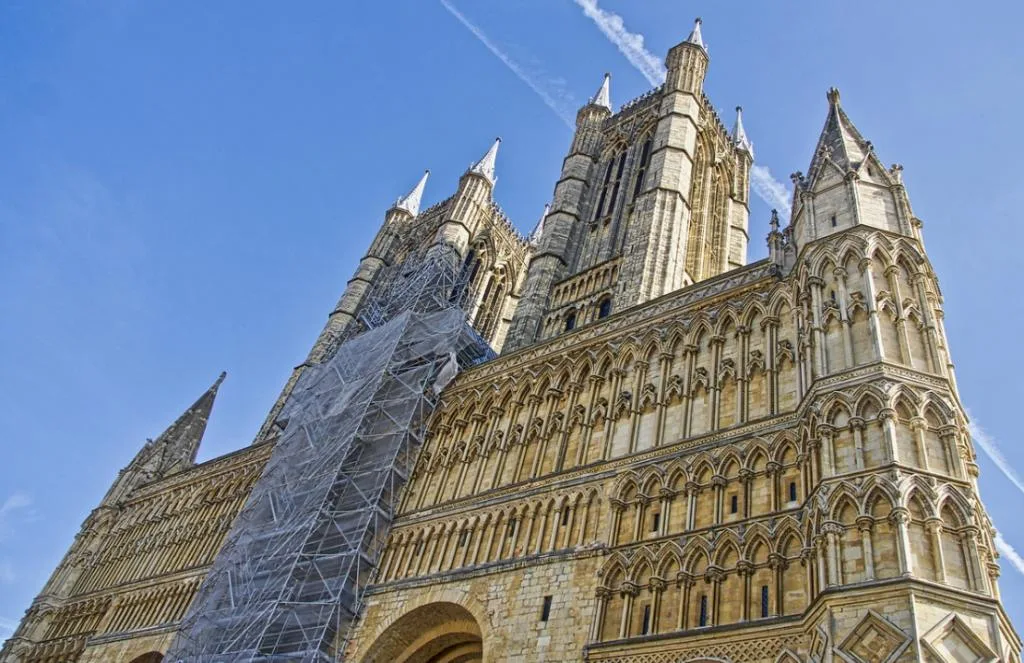
5. The main structure was built between 1192 and 1210
The new Bishop that was appointed after the earthquake was Hugh de Burgundy of Avalon, France. He became known as “Hugh of Lincoln,” and is the main force behind the construction of the cathedral we see today.
The foundation of the church was the choir, now referred to as “St. Hugh’s Choir,” and the eastern transepts, of which construction started in 1192, exactly 100 years after the cathedral was consecrated.
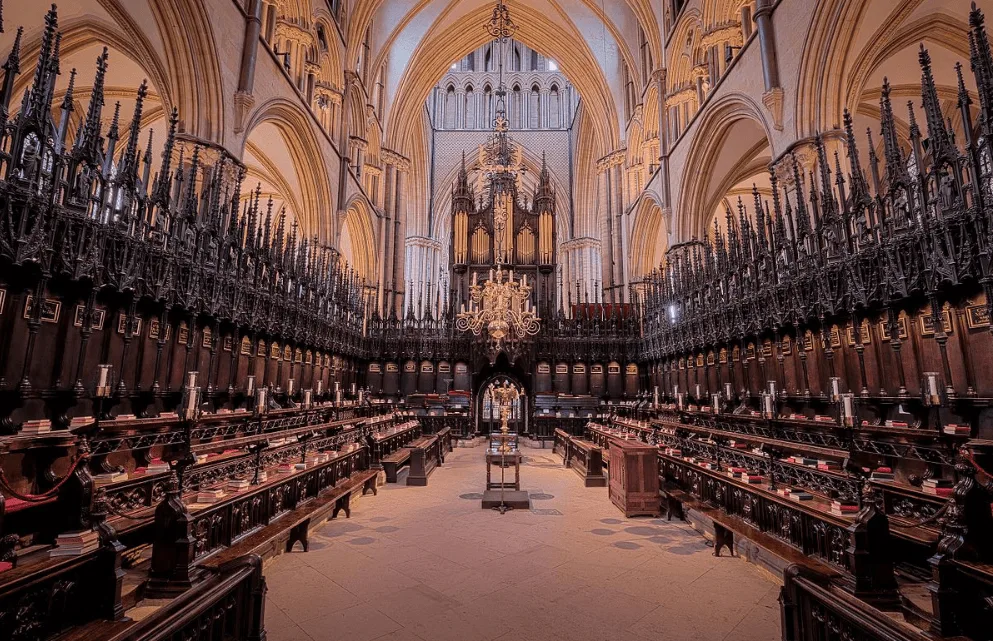
6. The style followed architectural advances
After the choir and transepts were completed, the central nave was constructed in the typical Early English Gothic architectural style.
Some new architectural elements were included as well which allowed the use of larger windows than those in the earlier Roman style, such as pointed arches, flying buttresses, and ribbed vaulting.
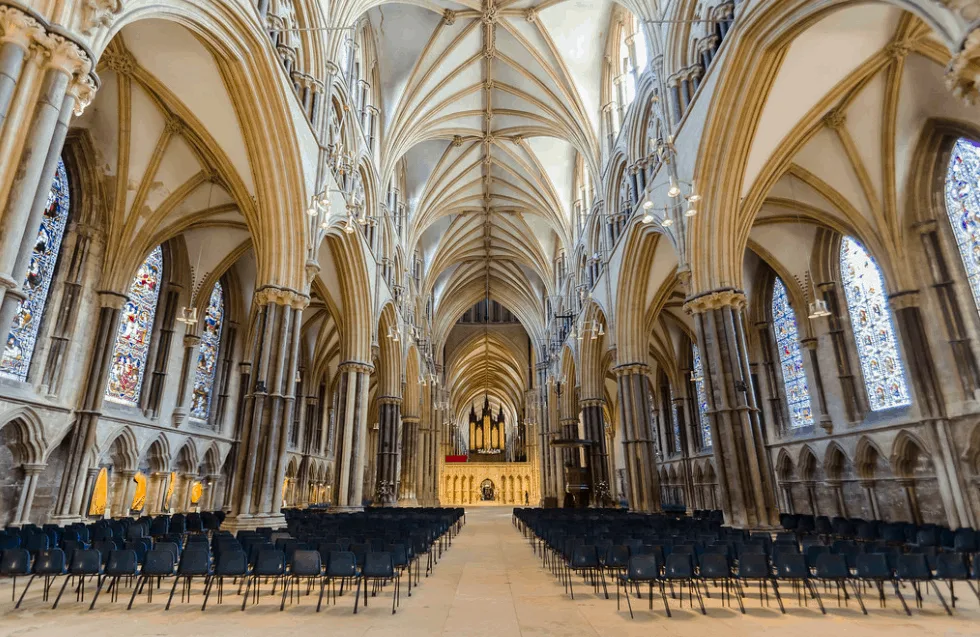
7. The “Dean’s Eye” dates from this renovation
One of the most prominent features of Lincoln Cathedral dating back to the construction period which started in 1192 is referred to as the “Dean’s Eye,” which was completed in the year 1235.
There are two large stained glass rose windows. The other is referred to as the “Bishop’s Eye” and was completed in 1335.
Both complement each other as referred to in a contemporary record called “The Metrical Life of St Hugh:“
North represents the devil and south the Holy Spirit, so one eye is looking out for the brightness of heaven, and the other for the darkness of oblivion.
Explanation of the meaning of the Dean’s Eye and the Bishop’s Eye.

8. Lincoln Cathedral benefited a lot from an unfortunate event
The body of a young boy was found dead in a well in August of 1255. A blood libel ensued in the town of Lincoln. Jews were accused of torturing and killing the little boy and a total of 18 Jews were convicted of the crime and hanged.
This tragic event resulted in the boy being referred to as “Little Saint Hugh,” a martyr who soon received worship from thousands of devotees who showed their respect, which in return helped to fund the further expansion of the cathedral.

9. Eleanor of Castile has a tomb in Lincoln Cathedral
After Eleanor of Castile died in the year 1290, King Edward gave his Queen Consort a proper procession and burial. Her body was embalmed, which also meant that she was being eviscerated.
She received a triple burial, one for her organs, one for her heart, and one for her body. Her viscera were burned and placed in Lincoln Cathedral.
Of her tomb, the original stone chest survives!

10. The tower reached its current height in the early 14th century
The original towers most probably suffered from structural flaws, because the main tower collapsed in the year 1237. A new tower was constructed but it wasn’t until the early 14th century that the main tower reached its current height.
Between 1307 and 1311, both the main tower and western towers, as well as the front of the cathedral were heightened to their current height.
The central tower stands 271 feet – 83 meters tall.
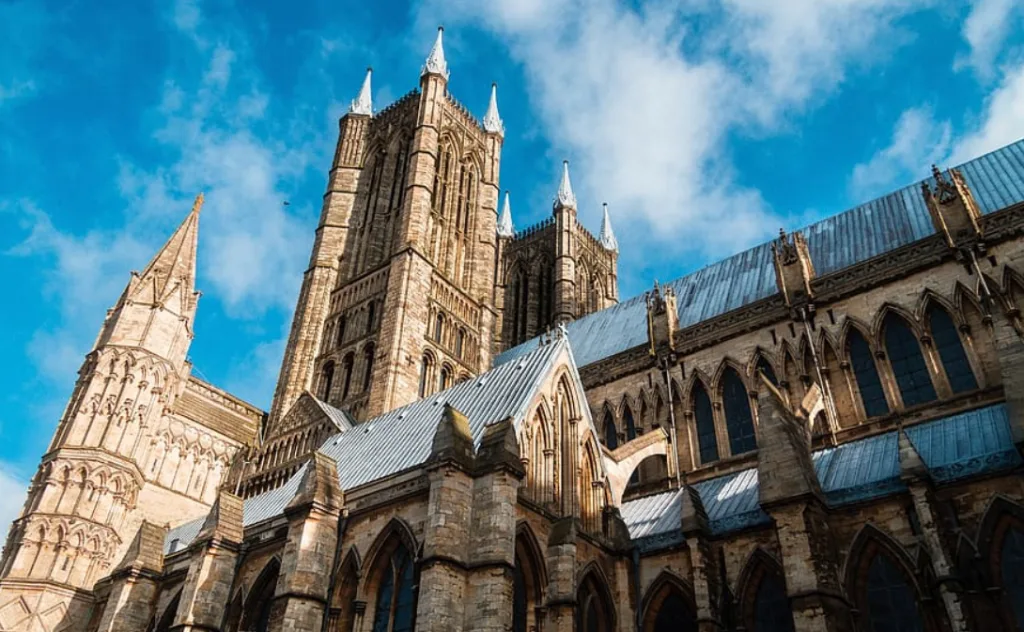
11. Lincoln Cathedral became the tallest building in the world
Lincoln Cathedral became the tallest building in the world because it wasn’t just the towers that were heightened. Spires were added to the building as well, and the highest spire allegedly reached a height of 525 feet – 160 meters!
This made it the highest building in the world at that time, a record it held for over 238 years until a storm demolished the spires of Lincoln Cathedral in the year 1549.

12. It took the record from the epitome of ancient monuments
To become the world’s tallest building wasn’t a trivial achievement. It surpassed one of the most famous structures ever built, the Great Pyramid of Giza, one of the ancient pyramids near Caïro.
To emphasize what this meant, the spires that were built in 1311 on top of the towers of Lincoln Cathedral had just surpassed a structure that held the record for being the tallest building in the world for over 4,000 years!

13. It held a copy of the Magna Carta
The Magna Carta is a charter of rights that was created in 1215 by the Bishop of Canterbury, and which was agreed on by King John to ease the tensions between the King and the rebel Barons.
Hugh of Wells, Bishop of Lincoln from 1209 until his death in 1235, was one of the signatories to the Magna Carta.
There are only 4 copies of the Magna Carta remaining and one of them used to be held in the Lincoln Cathedral. Right now, after an extended period of being on display in the United States, it is held securely at Lincoln Castle.
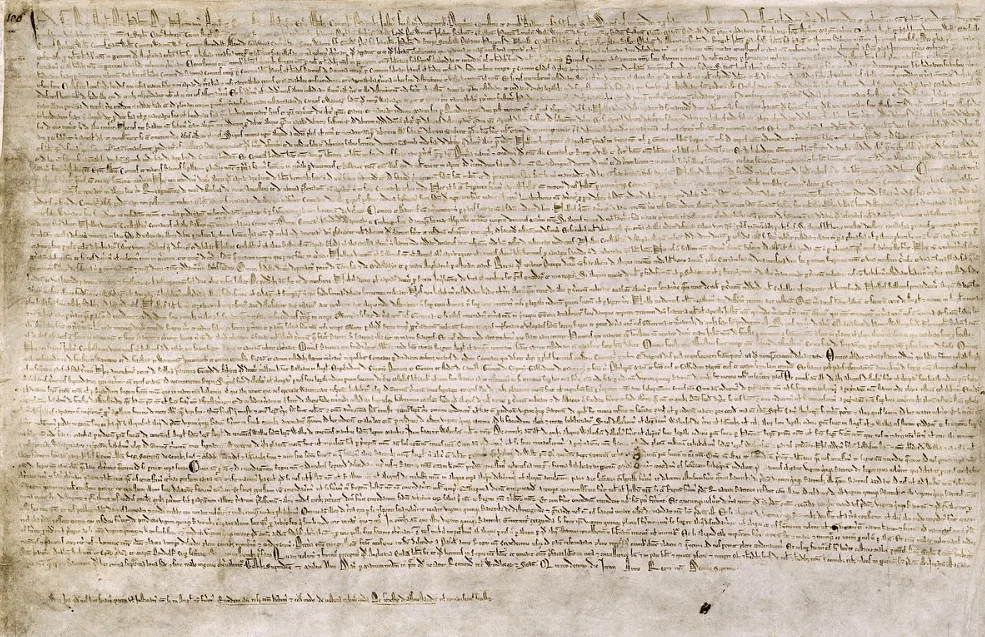
14. It’s the final resting place of an imp
One of the stone carvings inside of the cathedral is referred to as the “Lincoln Imp,” a mischievous imp sent to earth by Satan to cause some trouble.
After smashing things up in Northern England, they head over to the Lincoln Cathedral to do the same. They were spotted by an angel who appeared in the choir, and as they were chucking stones at the angel, he turned one of the imps to stone while allowing the other to escape.
According to the legend, the Lincoln Imp inside the cathedral is the one that was turned to stone by the angel.
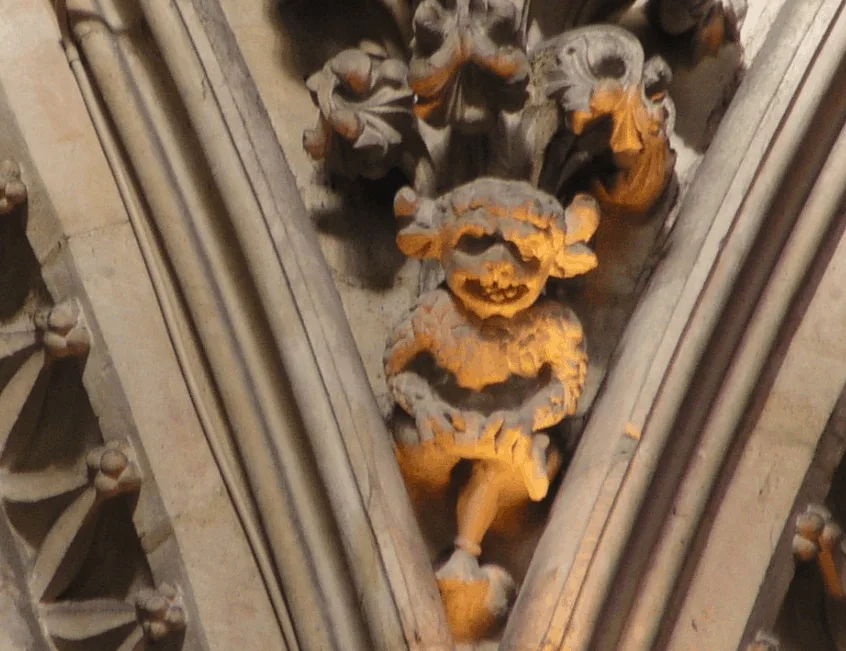
15. It’s built with the stones it stands on
One of the most interesting facts about Lincoln Cathedral is that the quarry to supply the stones it was built on is just around the corner. Better yet, the cathedral actually owned the quarry on Riseholme Road in Lincoln since 1876.
There’s one slight problem though: The quarry is expected to run out of stones in the year 2021!
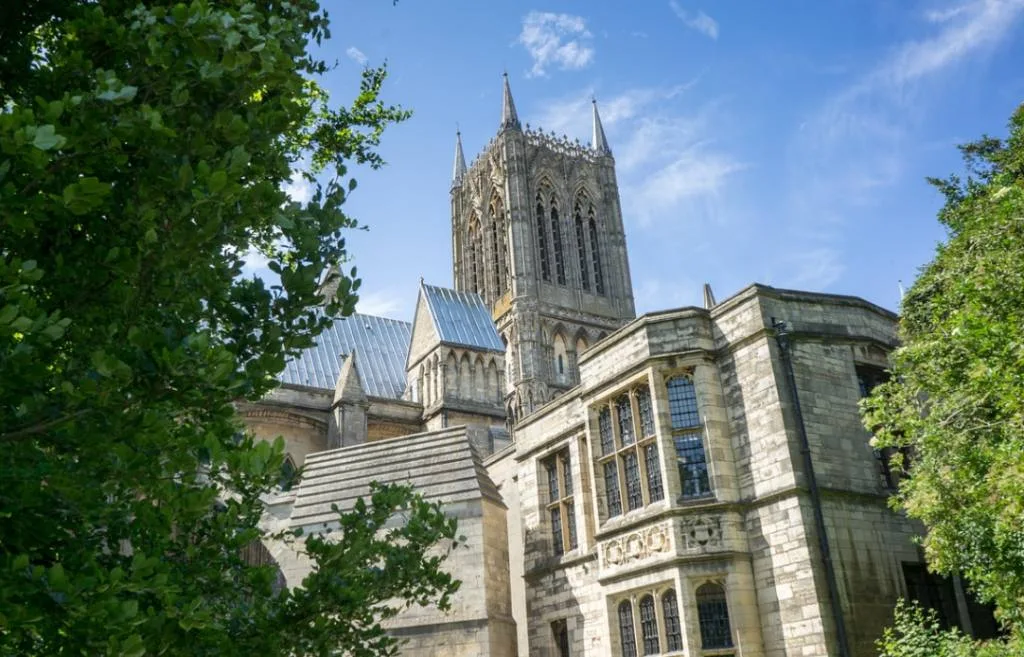
16. No more stones would be a huge problem
If the stone quarry in Lincoln effectively runs out of stones to support the restoration of Lincoln Cathedral, this will be a much bigger problem than you would expect.
The stonemasons who are working on the cathedral actually use 100 tonnes of stones every single year.
To make things even worse, the total cost for the maintenance and restoration of the cathedral is about £1.6 million a year. So of stones will have to be imported from elsewhere, this will seriously increase the cost as well.

17. Lincoln Cathedral took on the role of Westminster Abbey
Just like many other historical structures, Lincoln Cathedral has played a part in a movie. And not just any movie!
It played the part of Westminster Abbey in the movie “The Da Vinci Code,” which was based on a book of the same name. Apparently, the Abbey was not in the mood to get filmed and the management refused a filming permit.
One of the funniest facts about Lincoln Cathedral is that it took on the same role for two other movies titled “Young Victoria” in 2007, and Shakespeare’s “The King” in 2019.

18. It’s one of the biggest cathedrals in the UK
Lincoln Cathedral is the 4th biggest cathedral in the United Kingdom. It has a total floor area of 54,000 square feet – 5,000 square meters. Only 3 cathedrals are bigger, those of Liverpool, St. Paul’s, and York Minster.
It has a total length of 482 feet – 147 meters, a total width of 78 feet – 24 meters, and the height of the nave is 78 feet – 24 meters as well.
The tower height is 272 feet – 83 meters and it contains a total of 20 bells.
